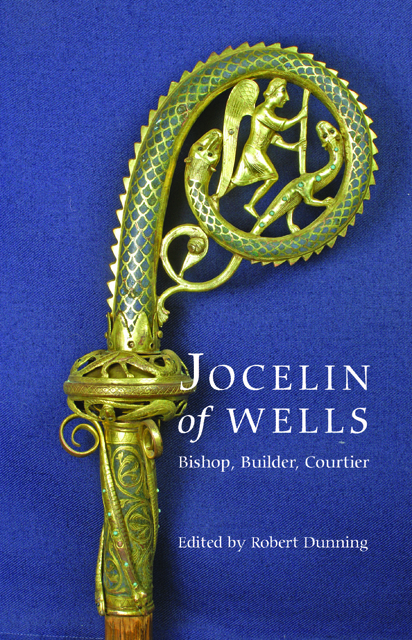2 - Jocelin of Wells and the role of a bishop in the thirteenth century
Published online by Cambridge University Press: 02 March 2023
Summary
Jocelin of Wells died at Wells on 19 November 1242, ‘full of days’, as the chronicler Matthew Paris says. A Wells man, probably born in the town or its vicinity, he had seen the creation of a cathedral worthy of a bishop, and had dedicated it to St Andrew in 1239. His marble tomb, surmounted by a brass, was placed in the middle of the quire, flanked by tomb effigies of earlier bishops whose remains had been translated there from Bath a decade or so before Jocelin’s election. The tomb, constructed before his death, has not survived, but his elegant nave and incomparable west front stand as his present monuments. He had made Wells the cathedral church of Somerset in all but name, and had prepared the way for his successor to take the title bishop of Bath and Wells. The centre of the see had been restored to Wells, as it had been before the Norman Conquest, and the titles of bishop of Bath, and of bishop of Bath and Glastonbury, were replaced by bishop of Bath and Wells in 1245, three years after his death. Jocelin was the first bishop to be buried at Wells since Bishop Giso, whose successor John of Tours had removed the see to Bath c.1090. In death the bishop of Bath had returned to Wells, where his spirit had been from his cradle, and where he had been brought up a primo lacte,’in the bosom’ of the church of Wells.
But we concentrate here on 1206 and Jocelin’s election to the see of Bath, not his death or his birth, so to that event we must now turn. How had Jocelin come to be bishop of Bath? The short answer is he was elected unanimously by both chapters, if not with the direct intervention of the king, certainly with his approval.
And what were the qualifications for a bishopric at this time?
The advertisement, had there been one, might have read as follows:
Bishopric vacant
The legal requirements – the successful candidate must be:
at least thirty years old
of legitimate birth
of commendable life and learning
(Canon 3 of the Third Lateran Council of 1179)He will be able to dispose of his own benefices freely.
- Type
- Chapter
- Information
- Jocelin of WellsBishop, Builder, Courtier, pp. 34 - 52Publisher: Boydell & BrewerPrint publication year: 2010
- 2
- Cited by

